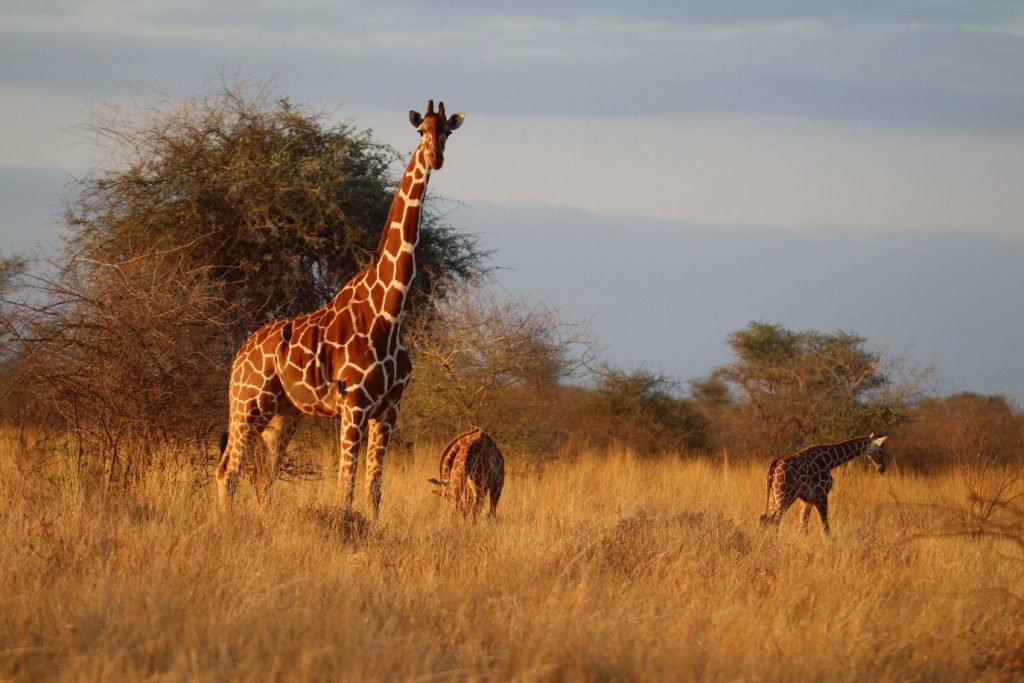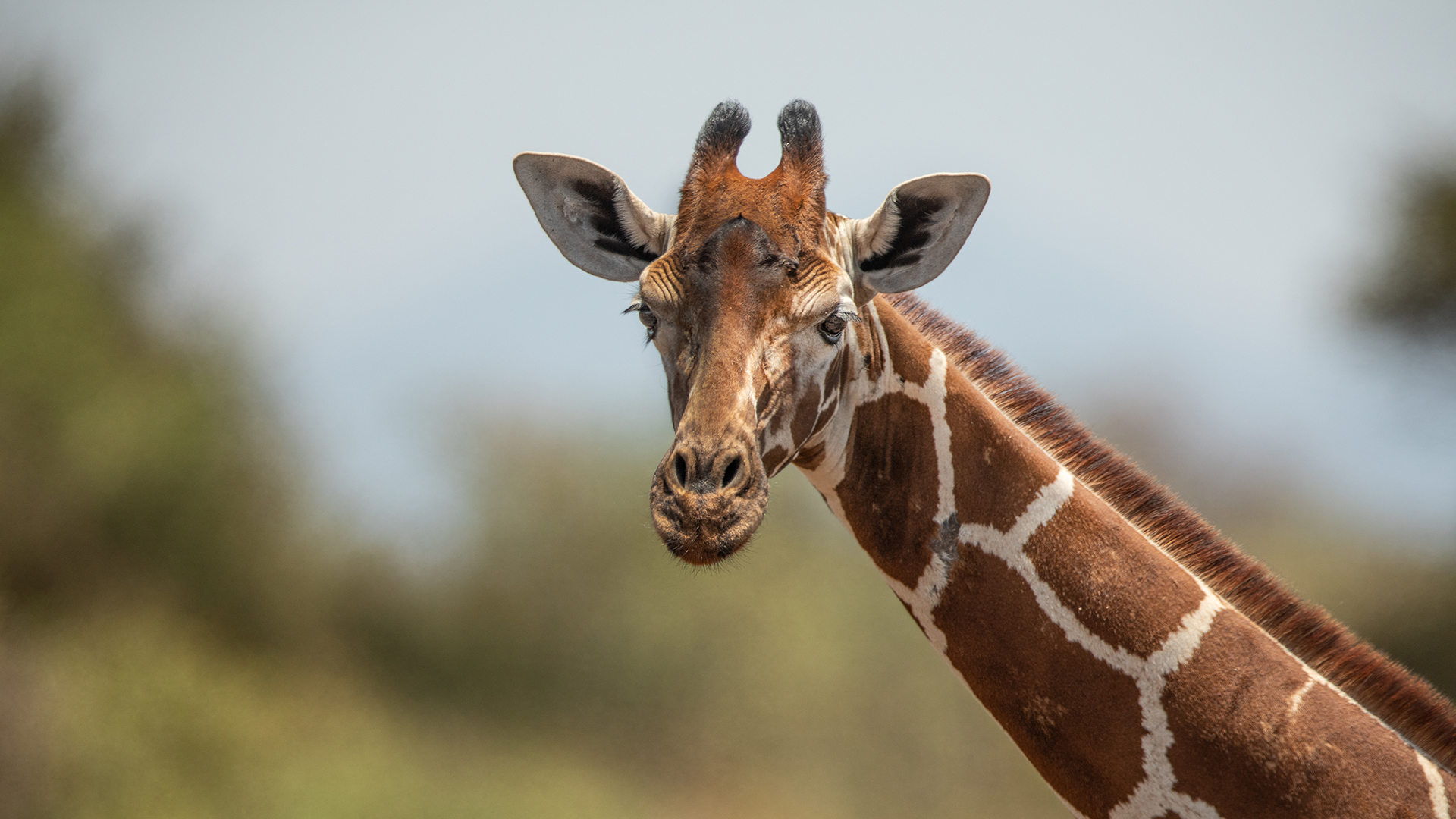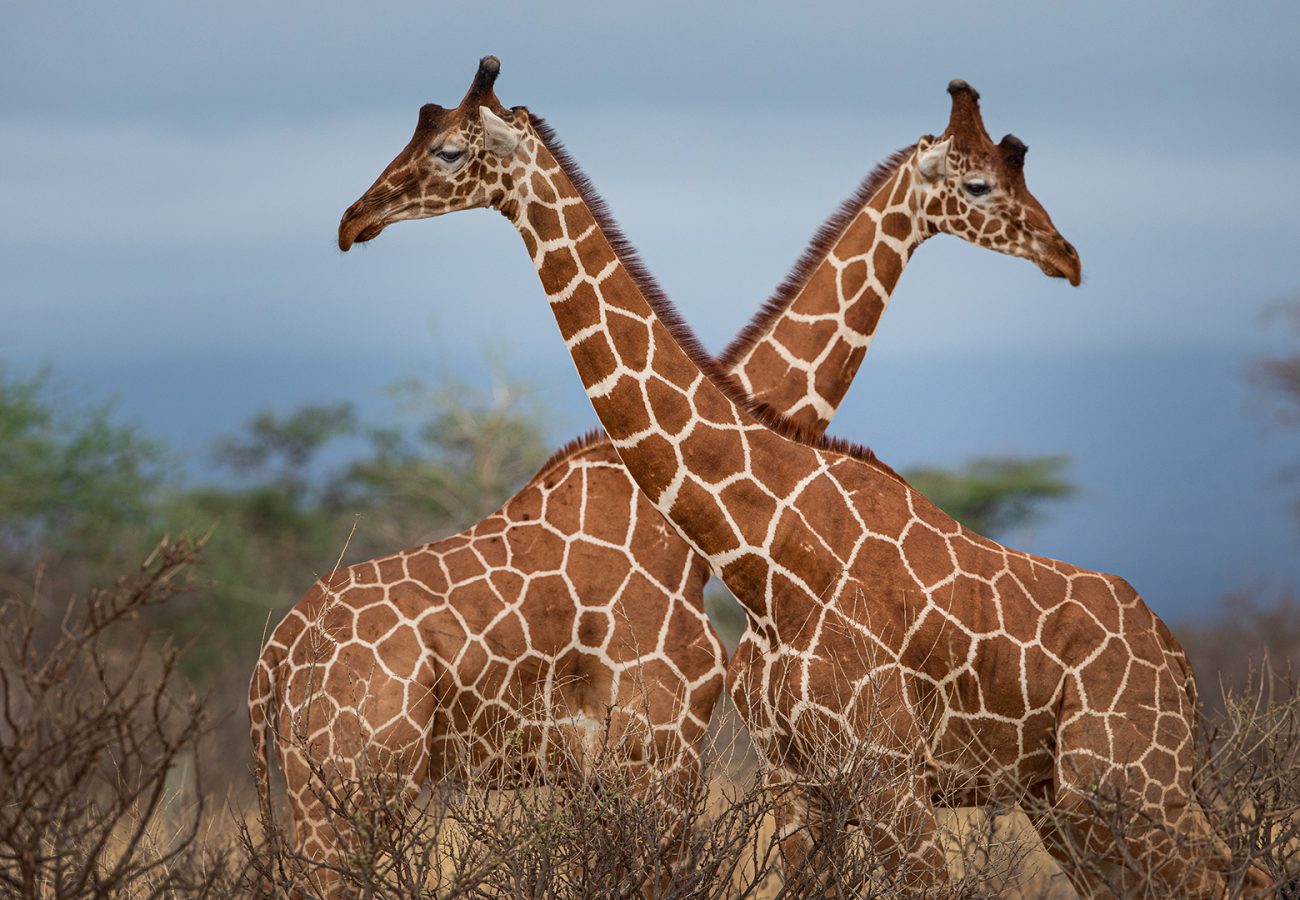Habitat loss and fragmentation, and poaching for bushmeat, have decimated populations of reticulated giraffe. Born Free is working to help these giants to recover in Kenya.
The reticulated giraffe, also known as the Somali giraffe, is one of the most endangered sub-species. It is now only found in north and north east Kenya, as well as small numbers in southern Somalia and southern Ethiopia.
Together with our partners, we are working to ensure the survival of reticulated giraffes in Meru Conservation Area, in Kenya.
GIRAFFE CONSERVATION EFFORT
SAVING MERU’S GIANTS
LOCATION: Meru Conservation Area, Kenya, East Africa.
GOAL: To address the threats faced by giraffes and safeguard giraffe habitat in the Meru Conservation Area.
THREATS: Despite increasing numbers of some giraffe sub-species in areas of Africa, giraffes remain vulnerable and face serious threats across their range. Loss of habitat due to conversion of land, drought, illegal hunting, and armed conflict are all having a negative impact.
Meru Conservation Area is an important stronghold for reticulated giraffes. This is a sub-species of giraffe listed as Endangered by the IUCN and recent surveys estimate 10% of the world’s population is found here. But, their future is precarious so it is vital to collaborate with local communities and Kenya Wildlife Service to protect them.
In this area the main threats facing reticulated giraffes are:
- habitat loss
- conflict with people due to crop foraging
- poaching
- increased competition for resources such as water
- climate change
- infrastructural developments
ACTIONS: In 2021, Born Free launched Saving Meru’s Giants to address the threats facing large herbivores, including reticulated giraffes. The programme directly tackles some of the most critical threats facing giraffes.

Reticulated Giraffe (Giraffa camelopardis reticulata) twins, Meru National Park © Born Free
Our team monitors and identifies individual giraffes and keeps a comprehensive database of individuals. This gives us more accurate population estimates and a good understanding of giraffe population dynamics in Meru Conservation Area.
To protect giraffes, we have a specialised local team (the Twiga* Team) who patrol and remove snares within giraffe habitat. This well-trained team are always on the look out for illegal activity, and also work closely in their communities to change attitudes towards bushmeat hunting.
Additionally, our team works hard to halt the degradation of giraffe habitat and to revive degraded areas to support giraffes and other wild animals. They do this by removing dangerous snares, managing wildfires, preventing livestock encroachment and looking into ways that we can help adapt to the impacts of climate change.
*Twiga means Giraffe in Swahili


